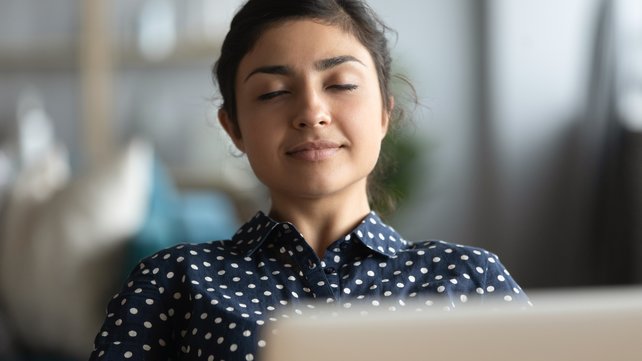ASMR: What It Is and How It Could Help You Relax

If you've spent any amount of time on YouTube, you've probably come across an ASMR video. With approximately 65 billion views in 2021 alone, it would be more surprising if you had never seen any sort of ASMR video come across your YouTube home page. If you've ever been curious about ASMR or why it's so popular, read on.
What is ASMR?
ASMR stands for Autonomous Sensory Meridian Response, which describes an actual feeling some people experience when watching or listening to specific "triggers". These feelings are described as a tingling sensation, usually felt along the scalp or back and upper neck. Think of it as the opposite of the uncomfortable "nails on a chalkboard" experience some people have. ASMR is generally a pleasant experience, brought on by certain noises and some hand movements.
These noises/movements, or triggers, tend to be very soft and soothing—whispers, speaking quietly, humming, gentle tapping on objects, pages turning, etc. Some known triggers are a bit more pronounced, such as the sound of crinkly wrappers or a person chewing. A person's hands moving across the screen in a fluttering motion or moving toward the camera like they're going to touch the viewer are also common triggers found in ASMR videos. Many video creators use roleplay scenarios in their videos, such as going to a salon, visiting a doctor, playing games, or doing the viewer's makeup.
Not everyone experiences ASMR as it is currently defined. It is estimated that 20 percent of the population may experience that specific tingle feeling.
Where did ASMR come from?
ASMR is a relatively new term. "Autonomous Sensory Meridian Response" was coined in 2010 to create a common phrase for the feeling, after people had been discussing experiencing similar nameless sensations online for a few years. Only six years after it had a name, ASMR had more search volume on YouTube than "chocolate" or "candy". Though the name is relatively young, the sensation likely isn't. Bob Ross, the television star of the 1970s who died 15 years before the term ASMR was invented, is surprisingly a popular ASMR star. If you can immediately picture his signature hair style, gentle voice, and the slightly scratchy sounds of his paintbrushes on canvas, you probably have a good sense of what makes ASMR videos so popular. They can create a soothing, immersive experience for viewers.

Reducing Stress in a Most Stressful Time
Mindfulness-Based Stress Reduction (MBSR) reduces stress by teaching present-moment awareness through meditation and gentle yoga. It helps calm the mind, reduce anxiety, and improve emotional resilience. Learn how MBSR can help reduce your stress.
What are the benefits of ASMR?
Some early studies indicate that ASMR is a beneficial tool to help reduce stress and lower heart rates in people who do experience the response. One study indicates that people who experience the tingly sensation showed a decrease in depressive feelings. There are also indications that ASMR can improve short-term memory. Research into the effects of ASMR is growing, but is still limited by small sample sizes and a lack of diverse participants.
The good news is that, other than spending more time on social media than you may wish, there's no real downside to watching ASMR videos. So the next time you're feeling stressed, or just scrolling through YouTube and feeling curious, you can give an ASMR video a try and see how you feel after.
About the Author:
Brown University Health Blog Team
The Brown University Health Blog Team is working to provide you with timely and pertinent information that will help keep you and your family happy and healthy.
Find a Doctor

The right provider is in our network
Search more than 1,200 providers in our network.



